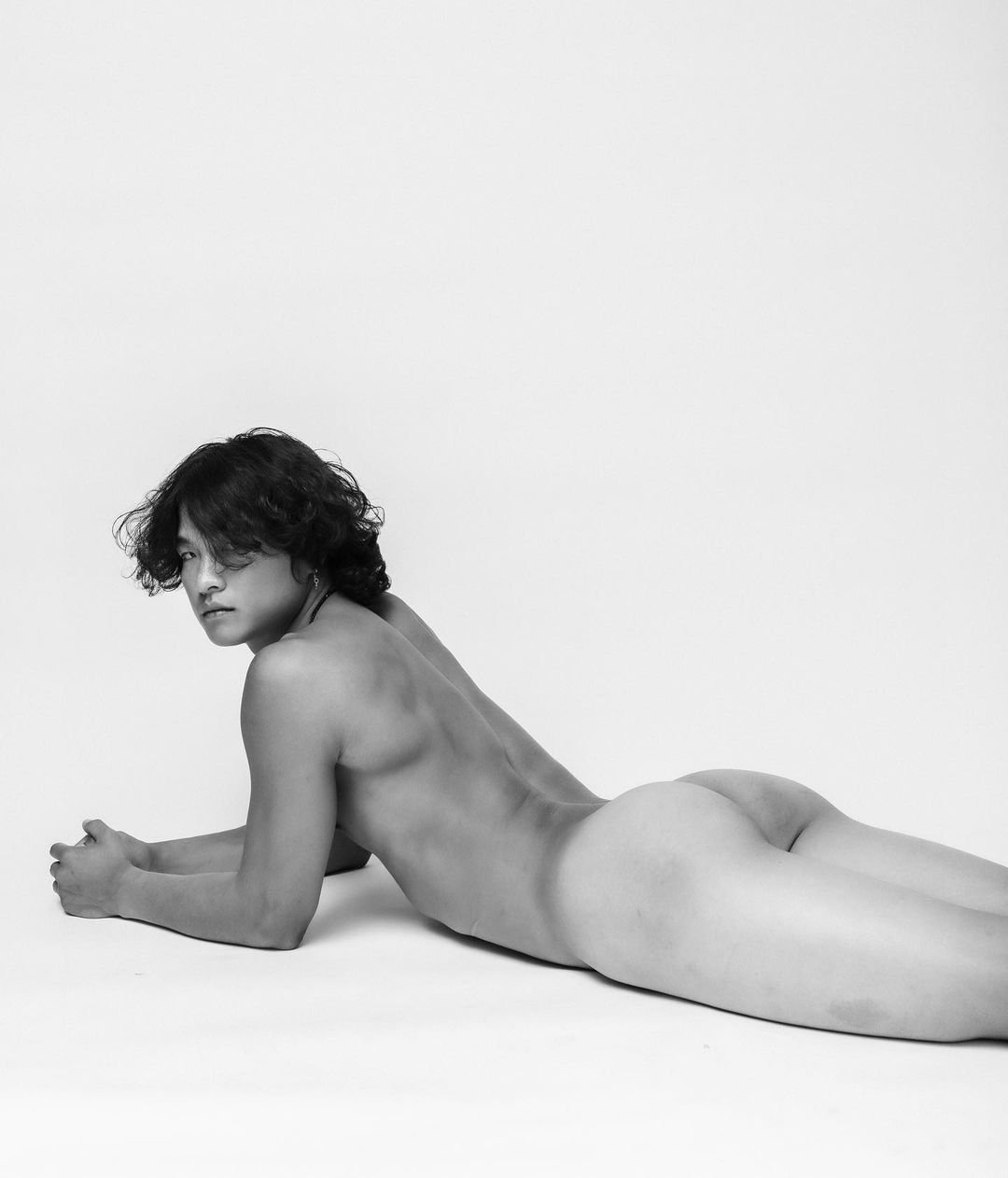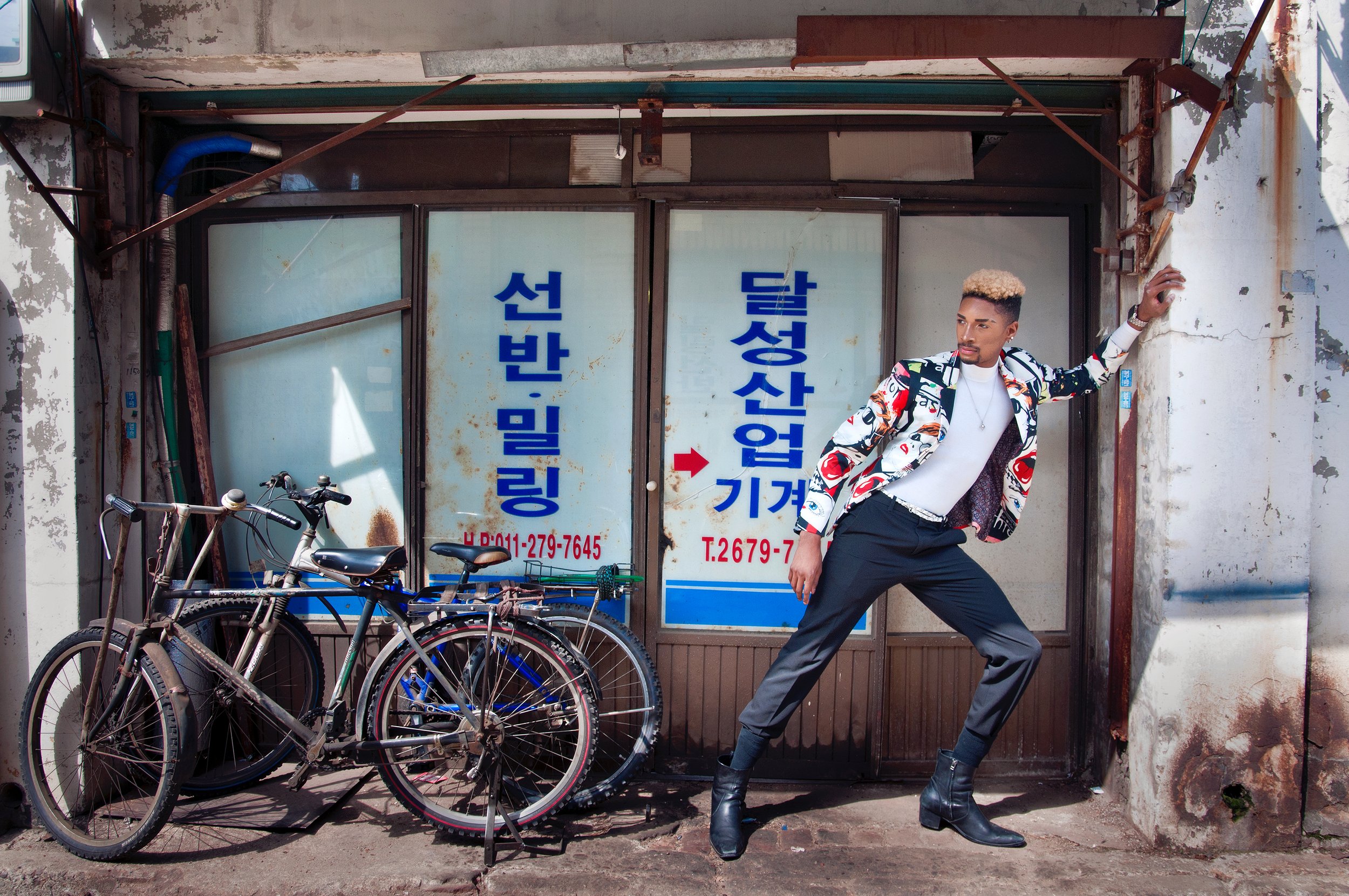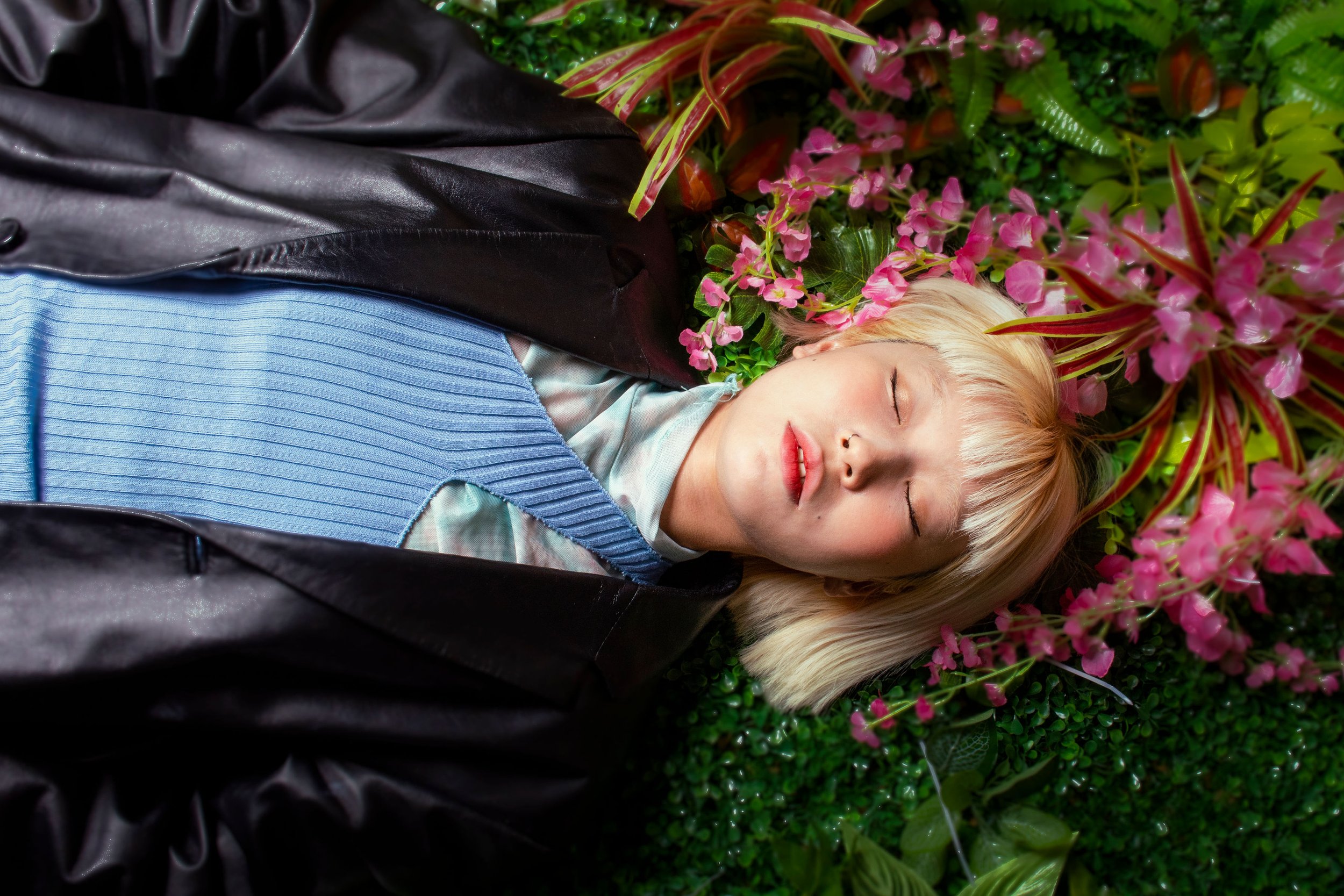Ways of Seeing - three photographers challenging representation in Korea.
By Ella Kaill (@ellakaill)
Korean mass media is infamous for its crushing beauty standards and strict portrayal of gender roles. We spoke to three photographers who are actively trying to challenge this.
Lindsay Ryklief | @ligrye
In South Korea, the men at the forefront of social consciousness are K-pop idols and men in dramas, polished to perfection. But to accept this form of masculinity as the only option is to leave out a plethora of other stories, personalities and subcultures. Lindsay Ryklief is keen to highlight an alternative view of Korean masculinity. His photo project Boys of Seoul is an immersion into themes of sexuality, masculinity and brotherhood in Korea. “In South Africa, there’s a notion that if you dress well or groom yourself, it’s not very masculine, but as a man in Korea, you can take care of your appearance and maintain a strong sense of masculinity,” Lindsay explains.
Boys of Seoul is often mistaken for being a queer series, which is only a half-truth. ”I have a queer eye, and that’s definitely going to differentiate me from a photographer who is not queer.” However, aside from exploring queer personalities, Lindsay uses his lens to spotlight themes of brotherhood between Korean males. Between men in Korea, holding hands, hugging, and other forms of ‘skinship’ are not considered acts of romance. “I think that’s a very special part of Korean society that has nothing to do with sexuality.” While some of Lindsay’s models are queer, he insists it is not a prerequisite to be involved in the project. “I’ve been shooting rappers, too. They’re not queer, but there is still something that needs to be communicated, perhaps a different form of masculinity.”
Lindsay works with a range of subjects to express his narrative and has strictly moved away from using professional models. A few years ago, he began asking people he met in clubs or on the street to participate in his project. He also asked friends of friends and began making connections through the people he met. “I want to photograph regular people and share their stories,” he says. Including ordinary faces rather than polished models is an important part of Lindsay’s work, and particularly to Boys of Seoul, as it leans into the celebration of self-expression and realism that he is keen to portray.
Although he has no specific criteria for choosing his models, Lindsay places importance on using a diverse range of people to communicate this project. In the same vein, he refrains from excessive editing and prefers a minimal editing style. “If all my photos were manipulated, I don’t think they would have the same meaning.” For him, it is both a moral choice and an aesthetic choice. “What am I trying to convey if I am manipulating everyone’s face? It’s not them. It would invalidate the project if I did that.” In a country like South Korea, where digital manipulation of portrait photos is extremely commonplace and even encouraged, refusing to adhere to those standards is a rebellious act.
Lindsay promotes his ethos further by his representation of tattoed bodies. “Men with tattoos or queer men are not shown to us in the mass media in Korea and are often considered bad people,” he says. “Through these intimate portraits, I wanted to challenge these ideas by showing that tattoos are just another form of self-expression.”
Steering his work away from severely manipulated shots, Lindsay also enjoys capturing the candid moments that shooting on film affords him. “With film, you are sometimes taken away from the project because it needs to get developed, and you don’t know what you will see when you get those images.” He emphasises the sense of vulnerability that film can create within an image, which is vital to much of his work. “For me, film photography conveys so much emotion and power when you get that shot.”
Despite the hugely positive response to Boys of Seoul and the commercial photography projects that it has led to, Lindsay stresses that he is not a trained photographer, and he feels that he has a lot left to learn. “My dream was actually to become an economist, even though I’m fucking horrible at maths,” he tells us. It’s hard to believe that he has produced the incredibly moving, expansive body of work that Boys of Seoul lives up to with zero professional training, but this is a testament to Lindsay’s sincerity and work ethic towards photography. “I want to be really successful. I have a long way to go, but I’m willing to put in the work. Every photoshoot is one more step of growth.”
Miss Sophie Gee | @misssophiegee
Grown in Melbourne, freelance photographer Miss Sophie Gee has been taking photographs ever since she was given a toy camera when she was four years old. She uses colour and styling to create stories in her art. “I like to describe my work as a literal punch to the face with colour,” she says. Sophie works between Melbourne and Seoul and has been freelancing for the last eight years. She sees her photography as a form of self-expression and as a physical extension of her own imagination.
Sophie mostly shoots portraits due to her love for capturing the human form, something she sees a unique beauty in. “I think it is about capturing some sense of a person’s character rather than producing a technically perfect composition,” she explains. “Portraiture allows me to connect with different kinds of people, which I love.” Sophie’s work sees her capturing a diverse range of models in sometimes unconventional situations. Her creative use of props and backgrounds provides vivacity and depth of story to her work. Sophie attempts to reflect her own world vision through her lighting and location choices. “Everyone needs a place to escape and feel something different in this absurd world. I think it is refreshing to see something beyond what is in front of us.”
Aside from physical props, Sophie’s models are perhaps the most important part of bringing her stories to life. Rather than searching for ‘perfect’ models or a specific model style, she leans towards unconventional people for her work. “I love models with strong features that will make for an interesting photograph,” she tells us. “I tend to see the beauty in everyone, and I strive to bring that out in my work.” However, she is careful not to lose her models’ personalities among the stories she wants to tell. According to Sophie, to create a story and piece of art, she must bring out the individual characteristics and emotions of the model. “I feel it’s important not to get trapped into what society deems beautiful and to create your own version of that.”
Having worked as a photographer both in Seoul and at home in Melbourne, Sophie has had contrasting experiences working with models and clients, largely due to the extremely high standards of beauty in Korea. “When I first started working with certain clients, I was surprised at the excessive editing they wanted in the photographs.” She noticed a pattern immediately. Sophie’s clients began asking her for ‘V’ jawlines, bigger eyes, thinner legs, and they all wanted to appear longer and taller. “To me, these people were already gorgeous. Seeing them wanting to warp themselves into what society says is beautiful made me a little uncomfortable.” Despite these constraints, Sophie has been inspired to keep creating her work in Korea. “I want to continue bringing a different perspective and style through my work here.”
Michael Davis | @imnotmarvingofoto
Michael Davis starts his days in his home studio, perfecting photography tips and editing tricks that he learns on YouTube. “If I have the morning to myself, that’s my morning entertainment,” he tells us. It wasn’t always like this for Michael. He began taking photos in high school with an old camera and grew even fonder of photography while travelling the world. Then, he carefully grew his hobby into a job and from a job into his own business. Michael’s graceful, editorial-style photos do not reflect his self-taught, home-grown roots in photography. In fact, it’s hard to believe some of his photographs were taken in his apartment in Seoul and not in professional photo studios. However, he isn’t constrained to his wonderful home set-up. “I’m constantly thinking about bigger concepts that I could do outside of my house. I’m never out of ideas.”
Michael takes deep care with the subject matter of his work. “When I’m looking for a concept to focus on artistically, I’m thinking about what matters to me specifically,” he says. What matters to him most is a subject particularly close to his heart. “Maybe 10 years ago, I came to the understanding that every woman in my life, my daughter, my mother, every woman I have dated or married, has suffered some form of sexual harassment or abuse.” It’s a frightening truth, and it scares Michael to know that humans, at their highest point of evolution, have failed to solve this problem that affects incalculable scores of people across the globe. “You would think this is what it should have been like 200 years ago when we were less evolved,” he says. Are sexual crimes something we understand more now, or are we in an epidemic? We cannot know, but there’s an argument that the latter is true; there are always unintended consequences of elevating society.
Michael learned a lot about the plight of women in South Korea, specifically when he worked as a teacher. “Teaching adults has taught me a lot about how life is for women here. Our classes were all based on conversation, and it was up to the student what path we would go down,” he explains. Many of his students were fresh out of university and teetering on the cusp of working life. Over 80% of them were also women, so he learned a lot by listening to them talk. “One of the most important things I learned at that time is that there is sexuality put on women at any level they reach,” he shares. “I learned that everything they wear and everything they do is scrutinised.” He chooses his words carefully as he empathises. “I don’t have to suffer like that. Nobody looks at men that deeply.”
Our conversation reminds Michael of a protest he once saw that resonated deeply with him. Women covered their nipples with pictures of male nipples to fight back against the idea that their bodies were inherently sexual. He is firm when he tells us he wants to avoid objectifying any of the subjects of his photographs. When asked if he thinks his work could ever exist outside of the male gaze. “I’m not sure, but I can genuinely see the beauty and artistic value in shooting the human figure,” he answers. “I do feel strongly that we can reconcile the two things. We can enjoy the beauty of what we are as human beings but step on the ugly side of it.”
Much of Michael’s work celebrates the human figure, but he tends to avoid working with professional models. “The people I work with aren’t ‘perfect’, and I love that,” he explains. “We’re doing a very fashion-y thing, but they’re real.” He works with a diverse range of amateur models from an array of different countries. In Michael’s work, real bodies take the place of typically petite, runway modelesque frames. He is keen to produce something outside the cultural limit of Korean beauty standards. “The idea that if you’re X number of kilograms, then you’re not beautiful, or you can’t be on the TV show panel, or you’ll get kicked out of the K-pop group, is awful.”
Some of these ideas are being challenged in South Korea now, and there is a tangible momentum building up in protest of unfair standards for women. Unfortunately, these days the feminist plight in Korea is being matched by an unruly anti-feminism movement. Heralded by men who feel feminism has gone too far and that positive progress for women is equal to discrimination against men, this movement absurdly attempts to block feminism in Korea from gaining any more traction. “One of the things I want to do with my photography is to unite the voices who want to support women, and to be one of the many sources challenging those outdated ideas about how women should live their lives,” says Michael. “I don’t see myself as being the pinnacle of a movement in this area. It needs a representation of everybody. We need the voices of everyone around us in order to make a positive change to women’s rights here in Korea and all over the world.”












